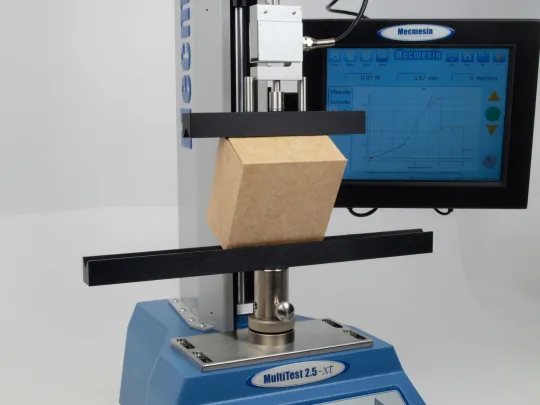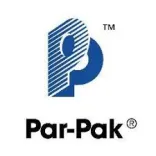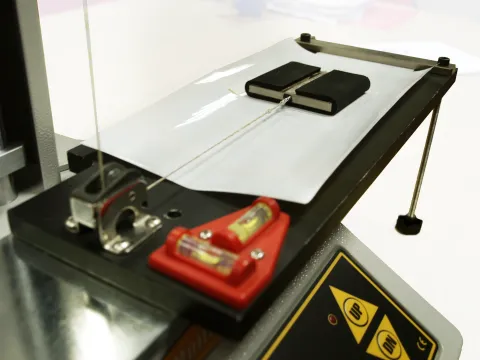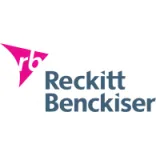Box crush test (BCT) and transit packaging compression testing


Customised engineering example
Boxes for the consumer and transit packaging industries must be as light as possible whilst still retaining a robustness to contain and protect their contents and also have the strength to stand up to shipping, handling and stacking requirements in service.
The use of corrugation adds rigidity to paper and card packaging materials, which are tested in compression with several crush testing standards, namely the box crush test (BCT) and the related edge (ECT) and stacking crush tests.
Suppliers may also require modified tests to suit specific customer’s needs, as transit packaging particularly can undergo a variety of loading during its journey.
The international industry quality assurance procedures for the box compression test may require self-levelling compression plate(s) in order to follow the pattern of failure, or some standards stipulate only the upper must be spherically pivoted to meet this requirement.
Other standards indicate rigid compression plates when loading opposite sides (or corners) of the box.
The BCT test loads the box at a constant rate to a nominal compressive load, or until the container collapses.
In-house testing may use custom fixtures to load the box for unique crush situations such as edge to opposite edge.










